 Carter Horsley
Carter HorsleyAug 28, 2019
Carter's Review
Next to the Helmsley Building straddling Park Avenue, the Chrysler Building, and the Sherry-Netherland Hotel, this building has the best and most ornate top in midtown and its gilded ornamentation and night-time illumination have made it the glittering "crown" of midtown.
Its developer, August Heckscher, a philanthropist who made a fortune in zinc and real estate, called the building "The Tower of Trade." "In the last analysis, whoever will not shop on Fifth Avenue and 57th Street will not shop anywhere," Heckscher mused. The developer, whose grandson and namesake was the New York City Parks, Recreation and Cultural Affairs Commissioner in the Lindsay Administration, maintained that his Fifth Avenue corner "will always be the most valuable and coveted."
So why doesn't the building, which was erected in 1921, have a great and large lobby at the international center of the world?
The building was once known as the Crown Building and is known now as The Aman New York Residences.
The answer lies in the simple fact that retail space at this location is just too valuable. At one point in the 1980's, space in the immediate vicinity was being offered for about $500 a square foot a year, or about 10 times most of the prime office rents in the area. By the mid-1990's, such rents had fallen about 20 percent, but were still about the most expensive in the world, but by the late 1990's they were on the rise again and office rents in this prime area were reaching all-time peaks especially for spaces with views of Central Park as are available from this building's tower over the low-rise Bergdorf Goodman building across 57th Street.
With showrooms on its lower floors and offices above, this 26-story tower was one of the city's first important mixed-use buildings to comply with the setback provisions of the 1916 Zoning Resolution and one of the last major skyscrapers to be built in the city before the onslaught of the Art Deco style dominated the next decade.
It was designed by Warren & Wetmore, the architects of Grand Central Terminal, and Charles A. Wetmore, the architect, was an investing partner with Heckscher on this project, whose 416-ft.-high, French Renaissance chateau-style crown was capped originally with a 12-ft.-high rooster weathervane that was removed in 1942 to be melted down for the war effort.
Over the years, the building has changed hands several times, passing though the hands of owners like Philippine President Ferdinand Marcos and First Lady Imelda Marcos, Adnan Kashoggi, the arms dealer, developer Bernard Spitzer and his son, former New York Governor Elliot Spitzer.
A June 14, 2019 article by Amy Plitt at ny.curbed.com reported that the current owner, Doronin and his partners acquired Aman, which had been founded in 1988 in Thailand and had expanded to 26 locations, for $358 million in 2014, "beating out the Carlyle Group and French luxury goods company LVMH Moet Hennessy. The article said that "about close to half of its apartments, which start at $4.65 million, have already sold.
The new owner of the building, Vladislav Doronin, indicated in 2019, that the rooster would be replaced. He had bought the building, with Michael Shvo, who is no longer involved with the building, for $500 in 2015. He announced that it would be converted into Aman New York, with a hotel on floors three through ten in the base and 22 condominium apartments in the tower.
Denniston Architects, which is headed by Jean-Michel Gathy whose other projects include infinity pool on the roof of the Marina Bay Sands in Singapore, and SLCE are the architects for the conversions.
The hotel will have 83 rooms.
The small lobby was pleasantly renovated and redesigned in the early 1990's with a great deal of glitz that has given it a brassy, beveled look that makes the space appear larger than it is. While it is an improvement, it looks like a suburban transplant and still has no rooster. Thankfully, of course, the outside of the entrance was not marred and the barrel-vaulted spaces are always welcome.
The notable roof also boasts an elaborate, tall chimney on its southeast corner.
The office entrance is demure, but the three gilded female figures above the entrance add grace even if they can't seem to distract the nearly naked youth holding up the great outdoor clock over the entrance of Tiffany's across the avenue.
"When it was built, the tower was seen as a monument to the Beaux-Arts movement; 1,363 ounces of 23-karat gold leaf and Vicenza statues adorned the exterior....At the time, it was largest use of gold leaf known" in the country," according to Mrs. Plitt.
Bottom Line
With the Helmsley Building straddling Park Avenue, the Chrysler Building on 42nd Street, the Sherry Netherland Hotel dominating Central Park South and the Woolworth Building facing City Hall Park, this is one of the city's greatest pyramids and this one has the best location and is the most visible because it towers over the low-rise Bergdorf Goodman store across 57th Street. It is across Fifth Avenue from Tiffany's.
Description
The building 9-story base with a cornice and bandcourses above the second third floors.
The base of the tower is setback and is four-stories high and is topped by an setback 8-story section with a bandcourse and cornice that is, in turn, topped by a setback two-story section with a bandcourse.
There is a one-story setback that then supports the pyramidal top that has dormer windows and a green copper façade.
The top of the pyramid top, which is highly visible from Central Park, is now missing its weathervane that reportedly will be replaced.
The large base of the building has gilded decorative spandrels and the two-story retail base at its corner has gilded florets designed by Peter Marino for Bulgari, the jeweler.
Amenities
The building's residential amenities include a "sky lobby" with a wraparound terrace, a residents' club, a cigar bar, a piano bar, a "wine library," a subterranean members-only jazz club, a three-floor spa with a 75-foot pool, fire pits, hummans, a salon, a juice bar and a gym. The building will also have a Mediterranean restaurant called Arva and a Japanese restaurant called Nama.
Apartments
Some apartments will have private pools.
According to Ms. Plitt's article, the five-story, 12,536-square-foot penthouse was sold for $180 million and Mr. Doronin "himself is reportedly eyeing an $83 million unit that has its own private pool and terrace. An article by Katherine Clarke in the June 13, 2019 edition of The Wall Street Journal stated that "last year, an Asian buyer agreed to" buy the penthouse.
History
Tom Miller's fabulous website, "daytonianinmanhattan.blogspt.com," devoted its June 16, 2016 edition to the building and provided the following commentary:
"In describing Fifth Avenue around 57th Street in 1876, a writer pointed out the newly0-built mansion of Adele L. S. Stevens at the southwest corner. He said that with the exception of Alexander Stewart's white marble palace, 'it is the most expensive house ever built in the city....Cornelius Vanderbilt's mammoth chateau filled the entire block to the north and William C. Whitney was living in the Stevens house.
"But times were changing. In February 1920, The New York Times remembered 'at that time the neighborhood of Fifth-Seventh Street was called pre-eminently the aristocratic quarter of the city. It retained that prestige until half a dozen year or so ago, when the upward march of trade invaded Fifty-seventh Street, and now few of its handsome residences remain.
"Among those last survivals were the Whitney and Vanderbilt mansions. But while Alice Vanderbilt remained until1926, the Whitney home had been converted for commercial purposes years earlier. The end of the line for the Stevens-Whitney mansion was inevitable following its purchase by August Heckscher in 1919.
"On February 15, 1920, the New York Tribune announced 'the sensational development planned for the southwest corner of Fifth Avenue and Fifty-seventh Street by George Backer and August Heckscher will mark a new epoch in the structural and commercial future of Fifth Avenue. The building is to be thirty stories high and sill be a combination of stores, showrooms, offices, apartments and a theater...."
Mr. Miller's article reproduced a rendering of Warren & Wetmore's original design for the site and it indicated a setback top with a slab-like dome similar to that atop the Pierre Hotel.
His article indicated that "The New York Times reported a 'radical change' and that the theater idea had been scrapped and the building's height reduced to 25 stories and the top was changed to a pyramid.
Mr. Miller also noted that the building's name was changed to the Crown Building in 1983 and Douglas Leigh was commissioned to gild and illuminate its façade. "The Times architecture critic Paul Goldberger was both pleased and displeased with the result, saying 'it is too gilded, particularly on the lower floors; they look not unlike a person with too much makeup. But near the top, distance reduced the garishness, and the effect is splendid."
Indeed!
At the same time, Mr. Miller continued, niches near the entrance were given "gold-covered statues: "Some called the sculptures the Three Graces, but they are most likely generic."
In their great book, "New York 1930, Architecture and Urbanism Between The Two World Wars," Robert A. M. Stern, Gregory Gilmartin and Thomas Mellins provide the following commentary about this tower:
"...The Heckscher Building, erected in 1921 at the southwest corner of Fifth Avenue and Fifty-seventh Street, was both the first tall office building to invade the northern end of Fifth Avenue shopping district and the first skyscraper to built under the new zoning.
"Whitney Warren's initial scheme called for a twenty-two story slab set on a nine-story base, with no transition between. The final massing was somewhat subtler; although the base was still capped by a strongly horizontal cornice, the slab acquired projecting wings below and a richly decorated octagonal crown whose steep tiled roof sported a gilt weathercock. The first sketch was embellished with delicate ornament derived from seventeenth-century French classicism; as the design evolved this was superseded by a more malleable French Renaissance vocabulary that deferred to the similarly eclectic Vanderbilt mansion on Grand Army Plaza, over which the pyramidal silhouette to the Heckscher Building loomed as a monumental backdrop. Inside, the exceptionally deep lower floors were devoted to wholesale showrooms and the comparatively slender tower to high-class offices. A through-block arcade lined with display windows for the showrooms upstairs connected Fifty-sixth and Fifty-seventh streets with the elevator core."
The corner retail space was occupied for many years by the I. Miller shoe store whose bent wood, undulating wall grills were one of the most impressive retail interiors in the city. The space was subsequently leased by Bulgari, the jeweler, which transformed the space and retail frontage into a highly sculpted, abstract façade in pinkish pastel colors that had nothing to do with the rich ornamentation of this building as evidenced by the ornate spandrel bas-reliefs. The Bulgari façade was sophisticated, but not subtle, a modernistic intrusion whose boldness was on too small a scale to make a major impact and yet too insensitive to the building's design quality to be excused.
The building has financial troubles as foreclosure proceedings against it started in 1934 and were not finished until 1938. Mr. Heckscher and several other owners sued Rockefeller Center in 1933 for improper leasing methods that, they claimed, hurt their properties severely during the Depression, but the suit never went to trial.
In 1946, Charles F. Noyes and Joseph Durst acquired the building and sold it a few years later to Kenneth S. Keyes and it was sold again in 1966 to Centurion Real Estate Inc.
In 1981, this building became the centerpiece of a major collection of Manhattan commercial properties assembled by the Marcos family of the Philippines when it was acquired for about $51 million. Financial problems, however, soon tied its ownership up in legal disputes for several years until it was sold in 1991 for $95 million by Saudi arms dealer Adnan M. Khashoggi and the Philippine government.
The building was the original home in 1929 of the Museum of Modern Art before it relocated to its new home on West 53rd Street. It also was the first home in 1923 of the American Mercury magazine, a famous literary publication that was edited by H. L. Mencken and George Jean Nathan.
The Crown Building occupies the former site of the "vine-covered" townhouse of William C. Whitney and the white marble house of Charles W. Morse.
While the asymmetrical massing of the setbacks might seem awkward at first glance, it is well balanced over the low-rise mass of the Bergdorf Goodman store complex when seen from Grand Army Plaza and the north. Its ornate, but fine ornamentation and great top make it the dominant building at this worldly center, the gem whose setting is merely a handful of famous skyscrapers.
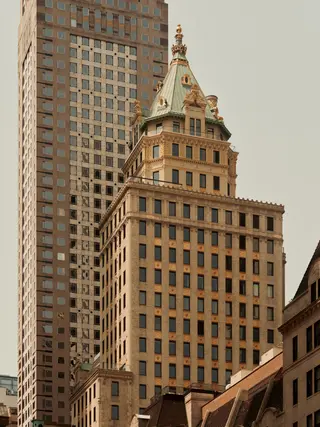
- Condo built in 1921
- Converted in 2020
- 4 apartments currently for sale ($20.45M to $28M)
- Located in Midtown West
- 22 total apartments 22 total apartments
- 10 recent sales ($20.7M to $135M)
- Doorman
- Pets Allowed

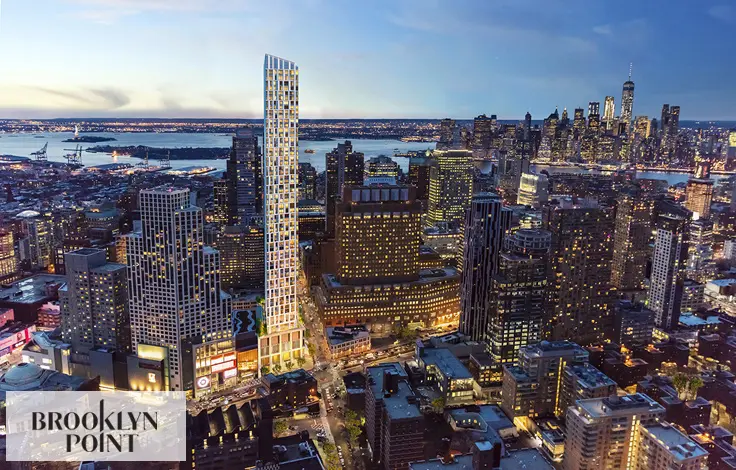
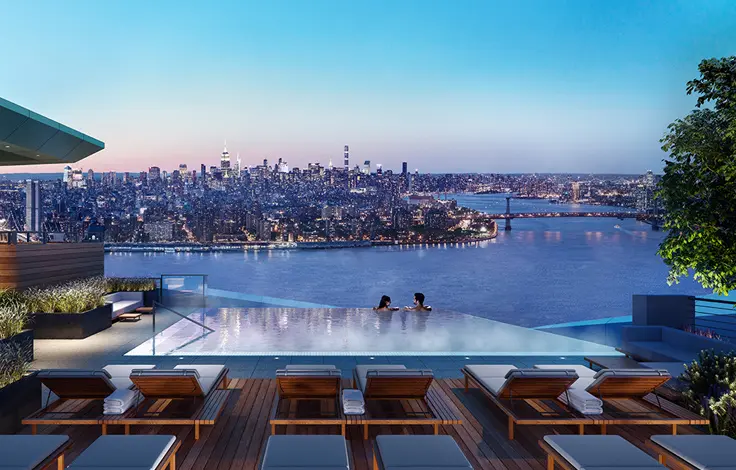
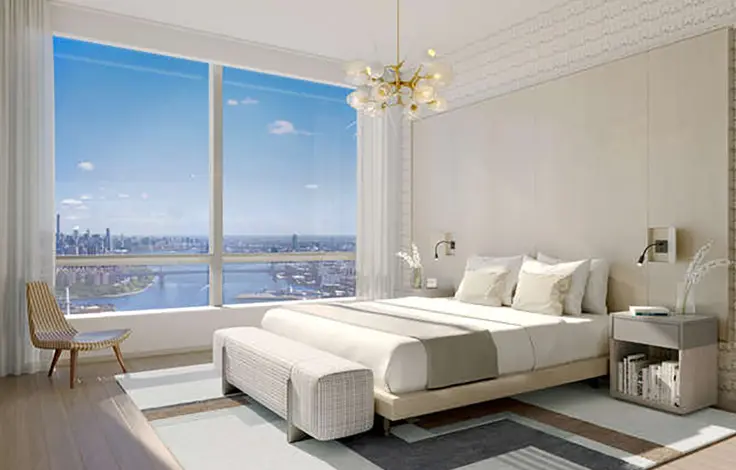
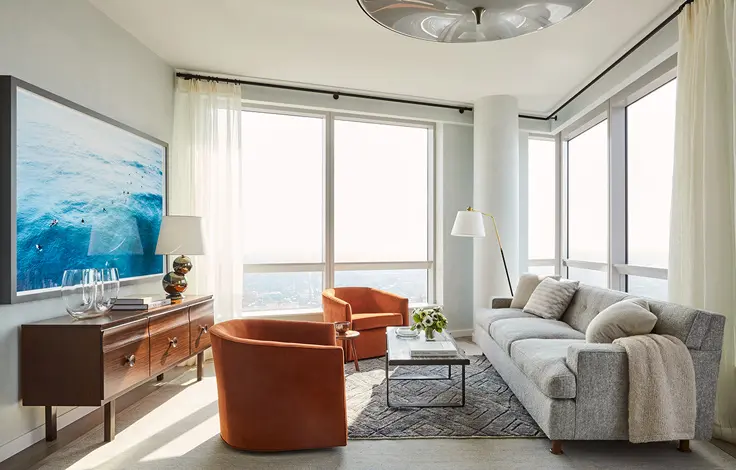
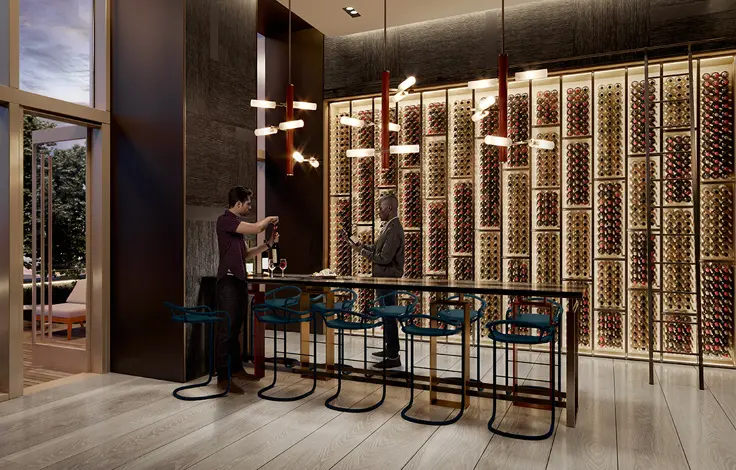
 6sqft delivers the latest on real estate, architecture, and design, straight from New York City.
6sqft delivers the latest on real estate, architecture, and design, straight from New York City.
